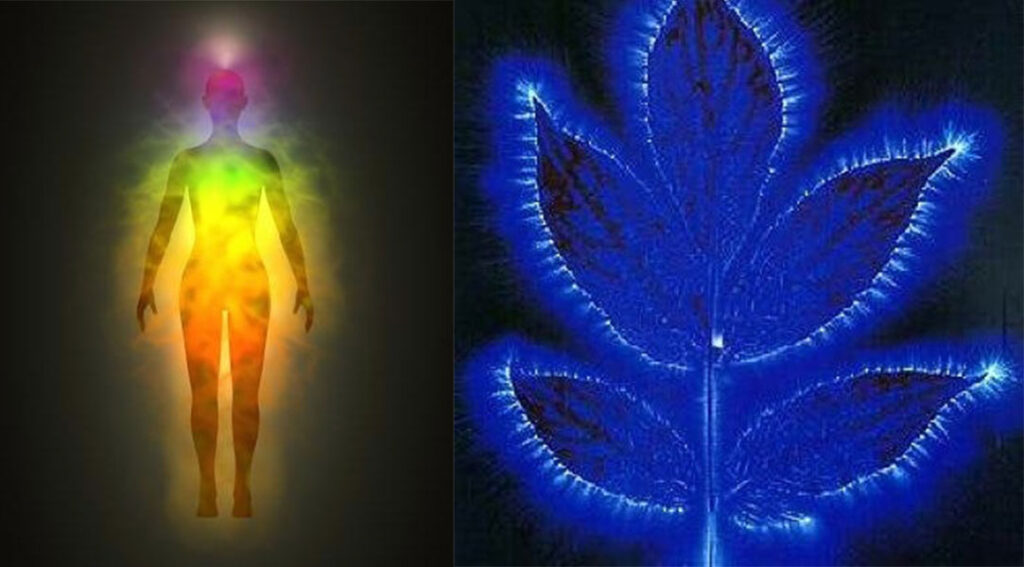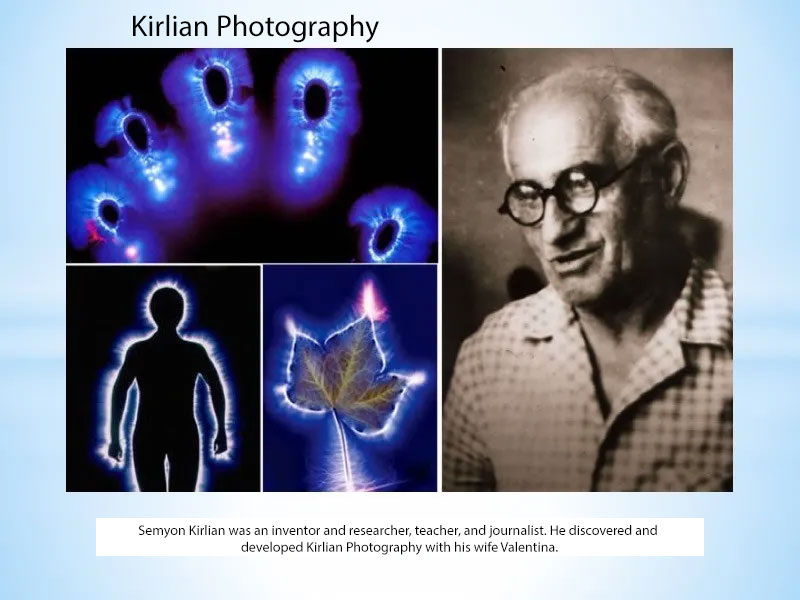Kirlian photography, also known as electrography, is a photographic technique that captures the electrical coronal discharge (a visible glow or aura) that occurs when an object is subjected to a high-voltage, high-frequency electrical field. It was named after Semyon Kirlian, who popularized the technique in the 1930s.
Kirlian photography is often associated with claims of revealing auras, energy fields, or the life force of living organisms. However, it’s important to note that the scientific consensus regarding the interpretation of Kirlian photographs is quite different from the claims made by some proponents.

Kirlian photography can reveal several interesting visual phenomena:
Here’s what Kirlian photography can actually reveal:
- Electrical coronal discharge: When an object is placed on a photographic plate or film and a high-voltage electrical field is applied, a faint and colorful glow or aura appears around the edges of the object. This is the electrical coronal discharge, and its appearance can vary depending on the object and the conditions of the experiment.
- Object’s energy field: Proponents of Kirlian photography often claim that the captured aura or glow represents the object’s “energy field” or “life force.” They believe that this energy field can provide insights into the object’s physical, emotional, or spiritual state.
- Detecting anomalies: Some individuals have used Kirlian photography in an attempt to detect anomalies or irregularities in living organisms. For example, they may use it to assess the health of plants, animals, or even humans by analyzing changes in the aura over time.
- Surface Characteristics: Kirlian photography primarily captures the electrical coronal discharge at the surface of an object, typically on photographic film or a digital sensor. It can show the shape and contours of the object, including any irregularities or variations in the electrical discharge.
- Moisture and Conductivity: The intensity and appearance of the corona discharge in Kirlian photographs can be influenced by factors such as moisture content, temperature, and the conductivity of the object. This means that variations in these factors can result in different-looking Kirlian images of the same object.
- Stress and Health Indicators: In some cases, Kirlian photography has been used to detect stress levels in plants and, to a limited extent, in human fingertips. Changes in the appearance of the corona discharge may be linked to the physiological state of the subject. However, this is not a reliable diagnostic tool for medical or psychological conditions.

It’s to note that the claims made about Kirlian photography revealing the “energy” or “health” of an object are highly controversial and lack scientific support. Skeptics argue that the observed effects are primarily due to factors such as humidity, air pressure, and the properties of the object being photographed rather than any inherent energy field.
It’s important to emphasize that Kirlian photography does not provide direct evidence of auras, chakras, or any supernatural or mystical properties. Claims of it revealing life force or energy fields around living organisms have not been substantiated by mainstream scientific research. Instead, the visual effects seen in Kirlian photographs are primarily a result of the interaction between the electrical discharge and the physical properties of the object being photographed.
In summary, Kirlian photography primarily reveals the electrical coronal discharge that occurs when objects are subjected to a high-voltage electrical field. While some people ascribe mystical or diagnostic properties to the images produced, these claims are not scientifically validated.